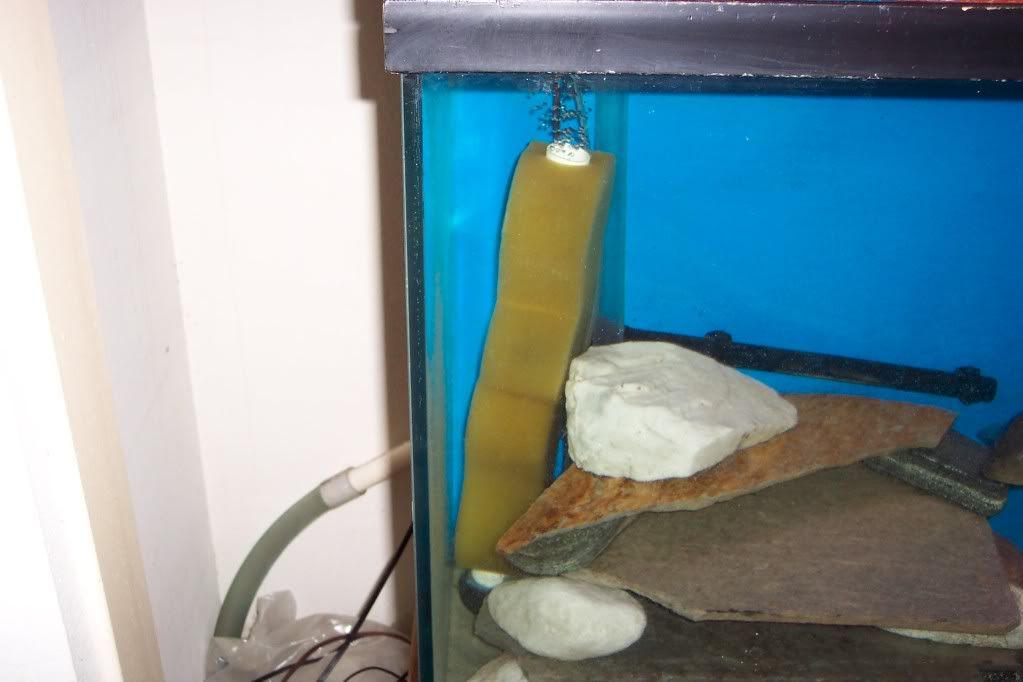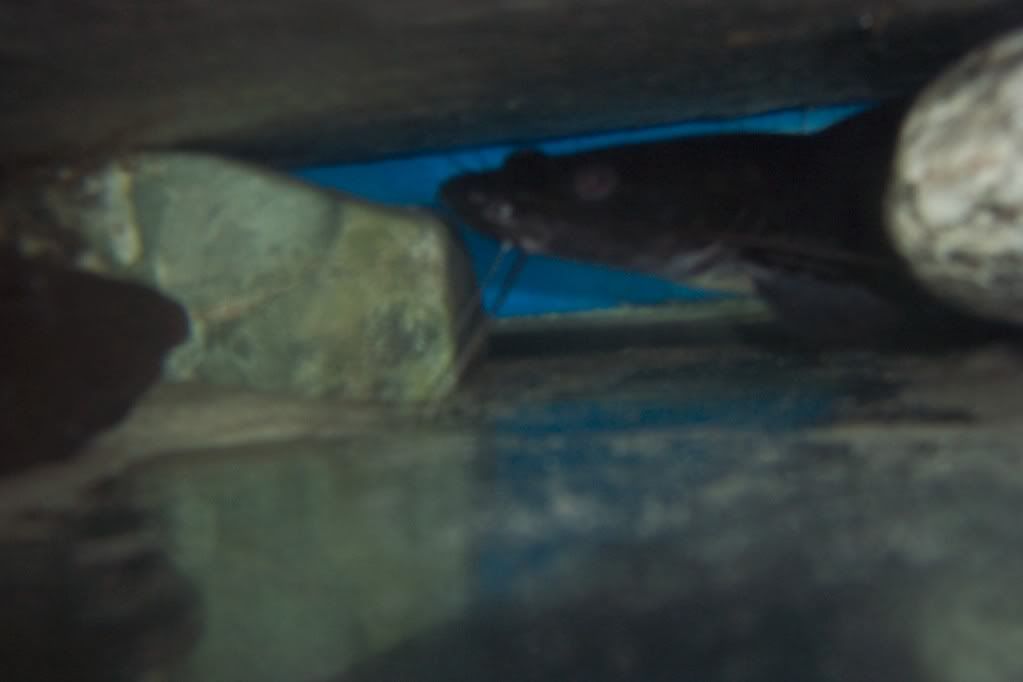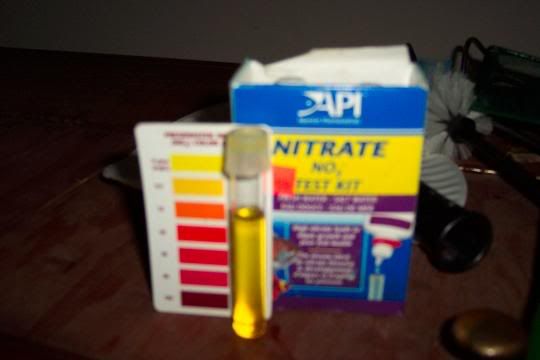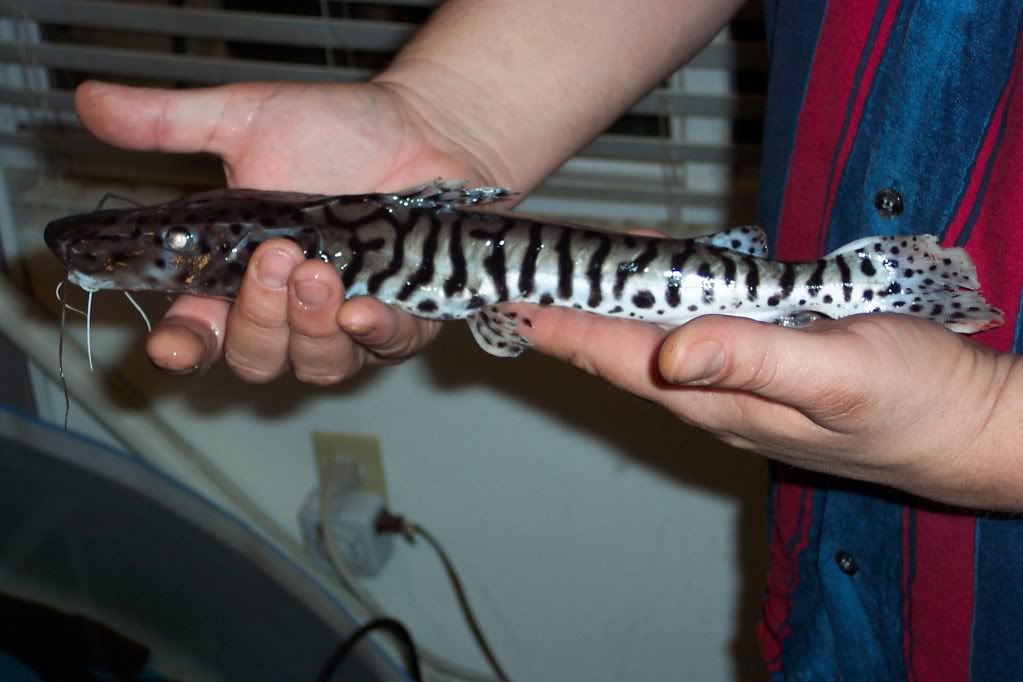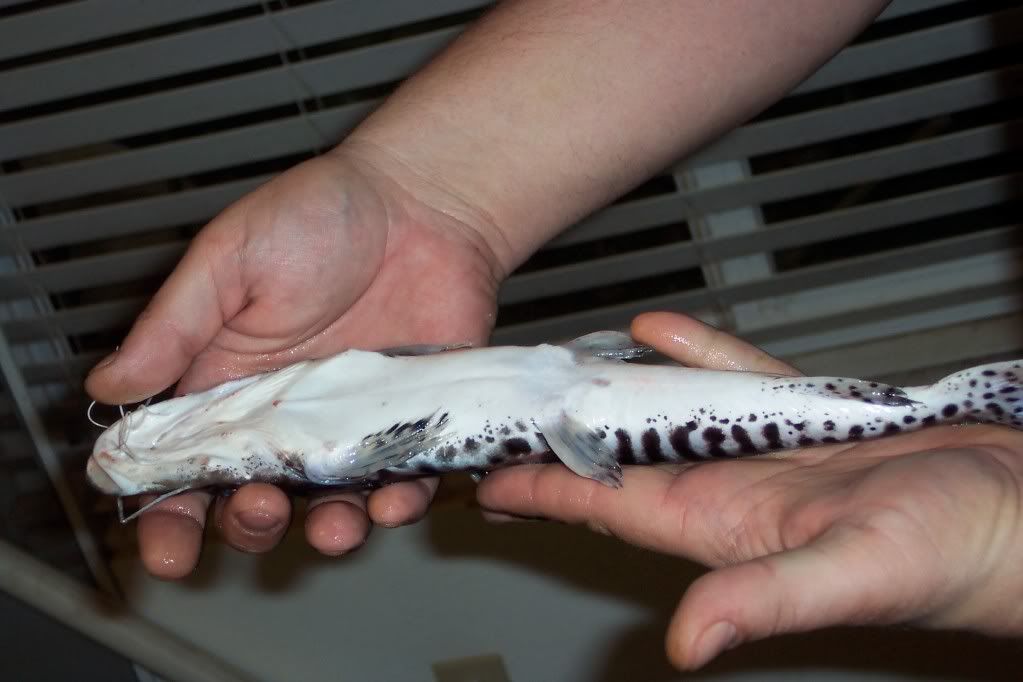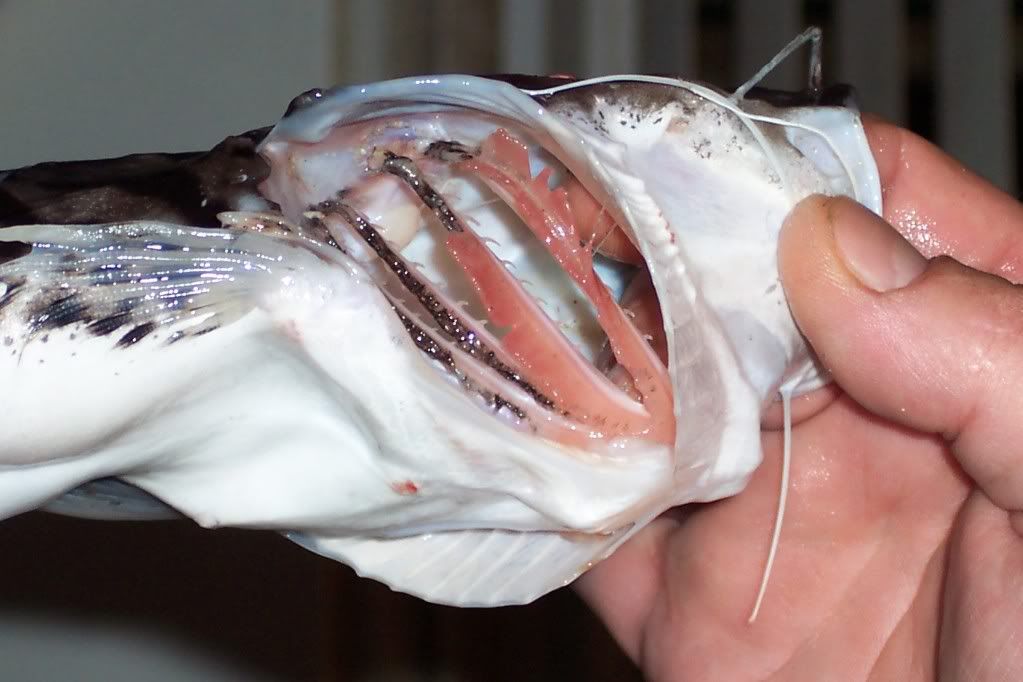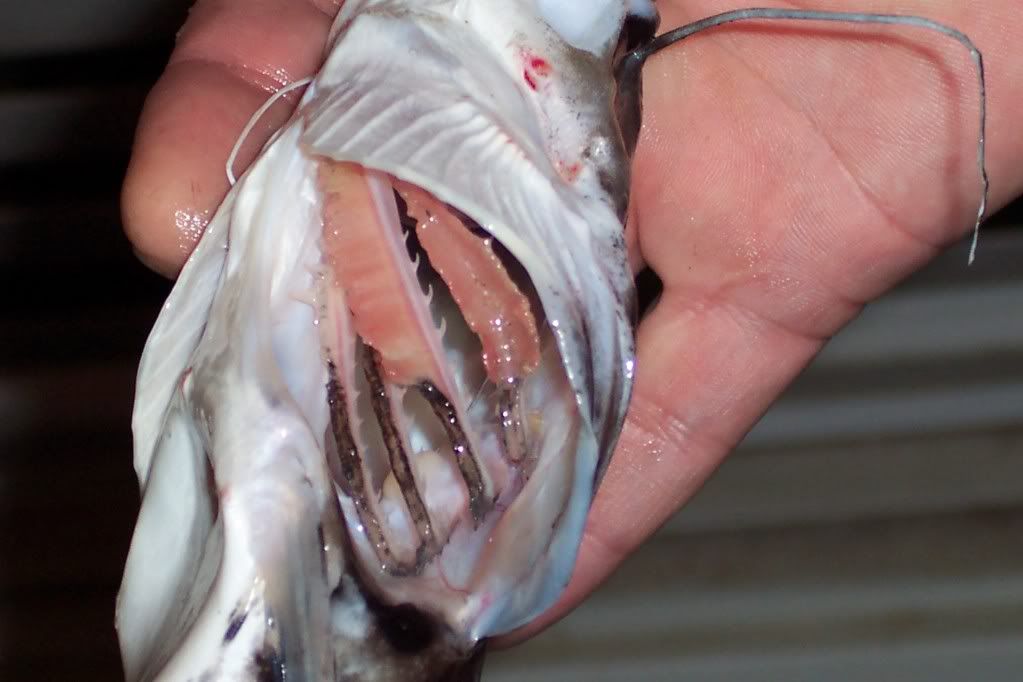--------------------------------------------------------------------------------
Catfish expert needed. My TSN has not eaten for 2 weeks.
1. 110 gallon tank
2. API liquid test kit. Amonia 0, Nitrate 0, Nitrate 20, PH 7.2
3. freshwater
4. Established for 2 years
5. stock list - 24" Tire track eel, 14" TSN, 4" red ear slider turtle, 4 adult parrot fish, 5" female flowerhorn, 12" unknown black catfish .
6. all fish original to tank
7. 82 degrees farenheit
8. Never any live plants
9. A/C 110 for mechanical filtration, 7 day filter rinse. Large air driven sponge for biological filtration.
10. 15" airstone. 190gph powerhead for surface agitation.
11. No sunlight. 1 48" florescent tube on timer from 6pm - 12am (6 hrs)
12. 50% waterchange every sunday with substrate vacuming.
13. pollock chunks fed mon,wed & fri. these are grocery store bought. Chicken liver every 3 or 4 weeks as a treat.
14. The TSN is swimming against the current of the A/C 110 about 75% of the time. This is not usual behavior.
15. NO treatment of any kind yet.
I posted the pic so you can see his sunkin in tummy. Am I overly worried or is there a problem?
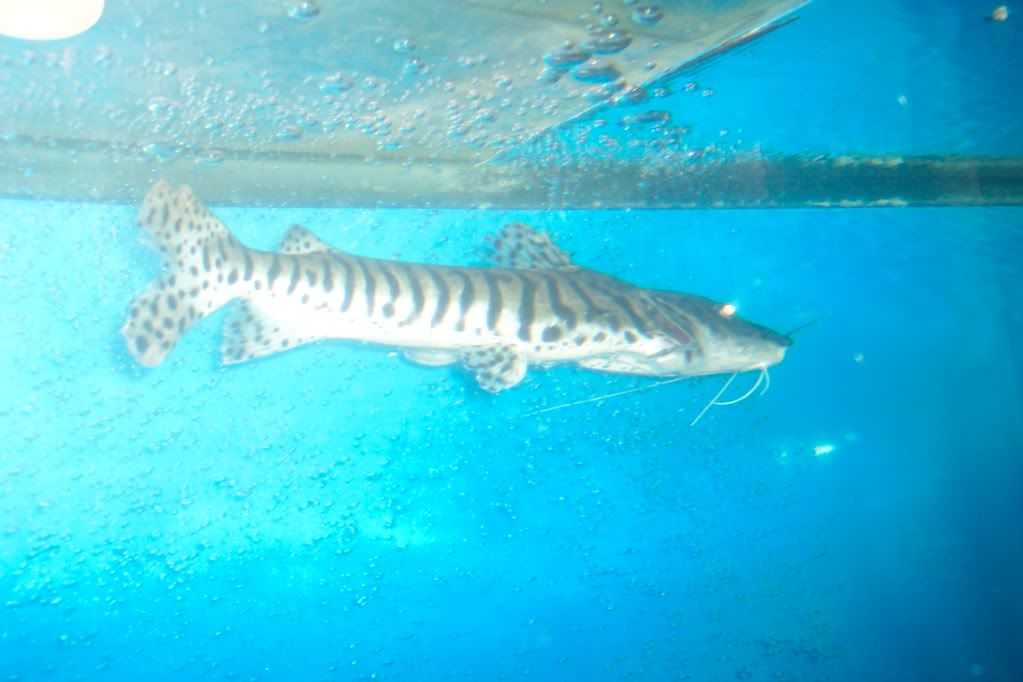
I posted the video so you can see the breathing. Does it look labored to you? Should I worry
Thanks in advance for any help guys





